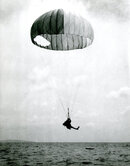BlueTrin
Scallops aficionado
Hey thanks so looking at the video, need to find some time to watch it properly again in a quiet place.Hi,
So I would suggest a few things.
First of all, look at the free online course at sidemounting.com (also on YouTube for free too) that has the finning techniques - so you can see what you are aiming for.
Then I would (as others have said) try to video yourself making the kicks. I would do these initially on land lying on a bench or even off the end of your bed. You can set your phone up to record and then play back after you've made a few kicks to see how they look. If you position the phone and leave it on selfie mode, you can see you moving live if you get the right position of the phone.
Then of course in the water is the real test to get to see yourself.
The comment about being in flat trim seems a bit strange - that's a good thing. Being negative is of course a bad thing, and the wobble you mention is a sign of a diver not feeling stable and the body makes you move to get some feelings you are used to.
The frog kick itself has three main phases,
- the load. this is where you draw the heels up towards the bum while keeping our knees reasonably close together
- the kick. this is where you now separate your fins, then at their widest, turn your ankles in and then lowering your feet to imagine clapping the soles of your feet together
- the glide. once the fins have met and been "clapped", then point the legs behind you and point your toes so the fin blade is as flat as can be (least water resistance). the glide is a rest and should last until you come to a stop. Don't be tempted to lift your legs back up too soon as it will just add drag and slow you down.
Hope that helps and do let me know if you get to watch the videos at all.
Cheers
One thing I noticed is that he does try not bring the “sole” of the fins against each other.
I think some time ago, one instructor told me to try to picture clasping then together. Maybe I remember wrong?
Love the video though, the pace is slow enough and he provides videos to picture everything he says.




